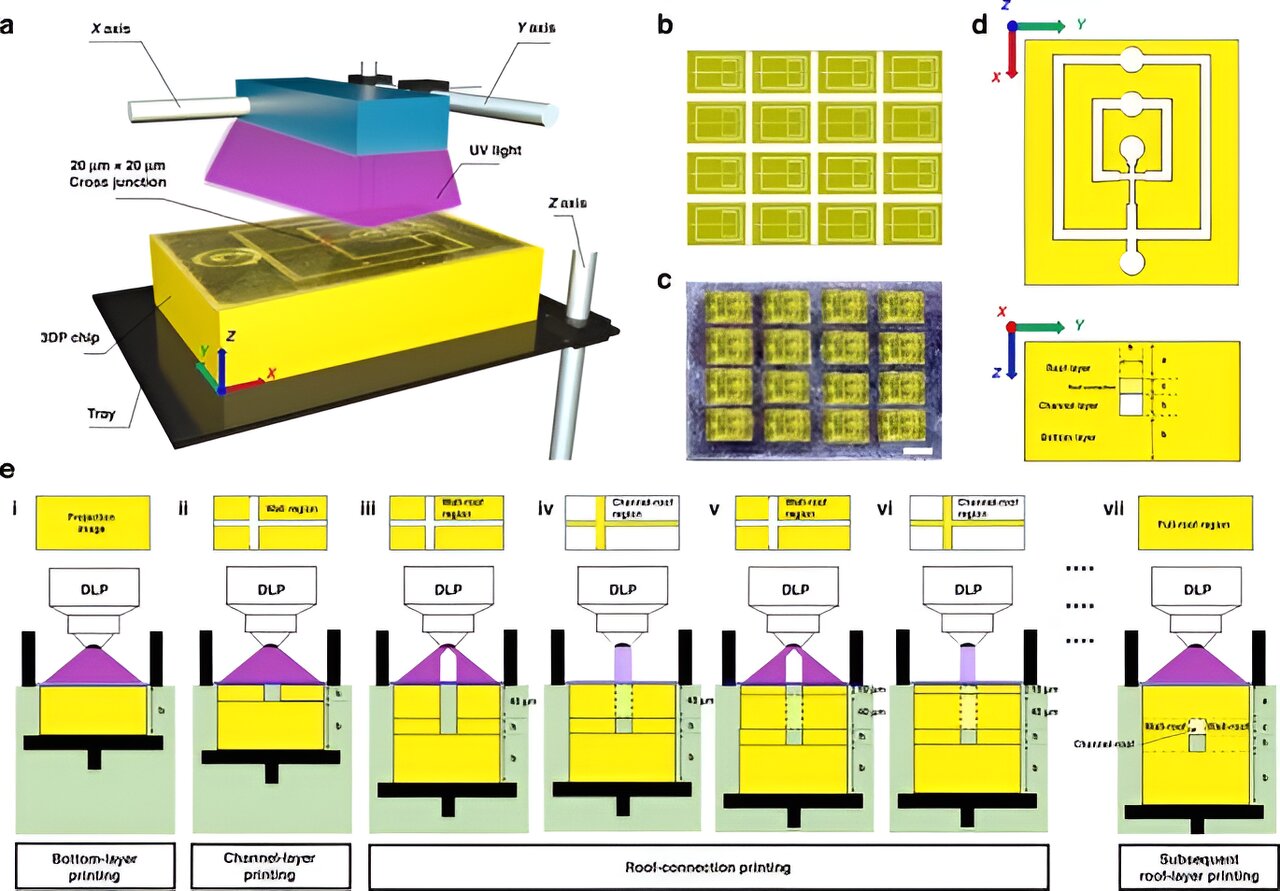Conventional manufacturing methods such as soft lithography and hot embossing processes can be used to bioengineer microfluidic chips, albeit with limitations, including difficulty in preparing multilayered structures, cost- and labor-consuming fabrication processes as well as low productivity.
Materials scientists have introduced digital light processing as a cost-effective microfabrication approach to 3D print microfluidic chips, although the fabrication resolution of these microchannels are limited to a scale of sub-100 microns.
In a new report published in Microsystems and Nanoengineering, Zhuming Luo and a scientific team in biomedical engineering, and chemical engineering in China developed an innovative digital light processing method.
They proposed a modified mathematical model to predict UV irradiance for resin photopolymerization and guided the fabrication of microchannels with increased resolution. The advanced microfabricating method can facilitate major developments in precise and scalable microchannel formation as a significant next step for widespread applications in microfluidics-based strategies in biomedicine.
The microfluidics chips offer a powerful tool to miniaturize applications in 3D cell culture for drug screening and testing applications and organ-on-a-chip assays. Conventional methods to develop microfluidic chips include soft lithography and hot capillary fabrication with a complicated engineering process, low productivity and high cost.
2023-09-19 02:48:03
Article from phys.org
